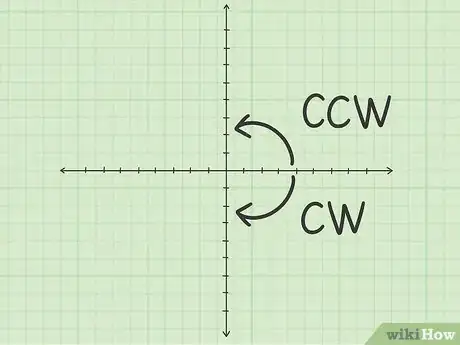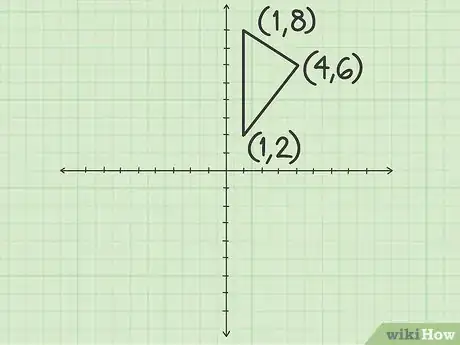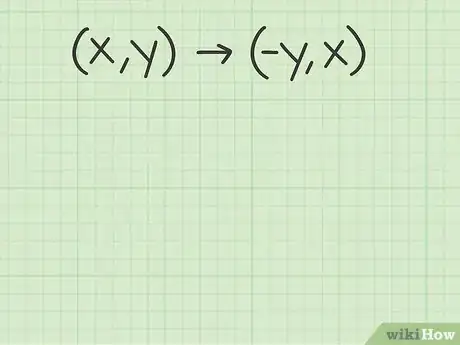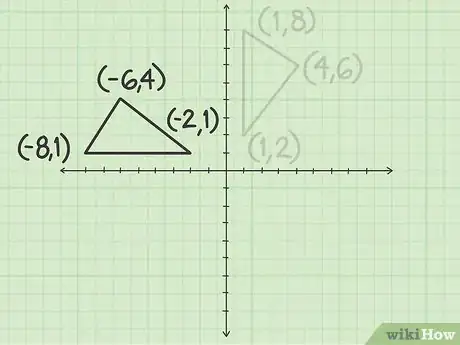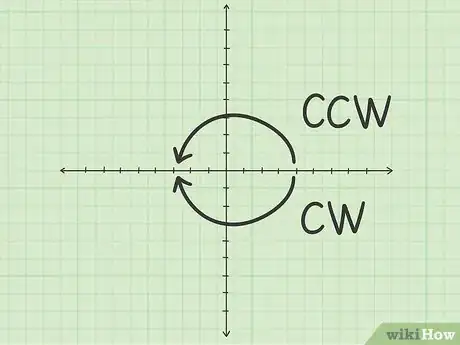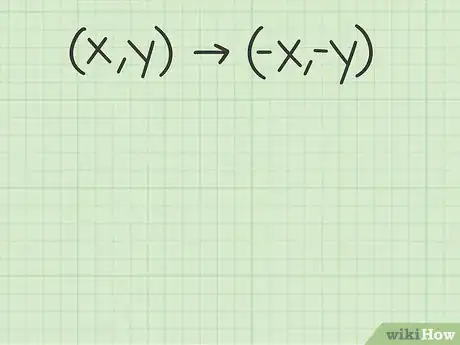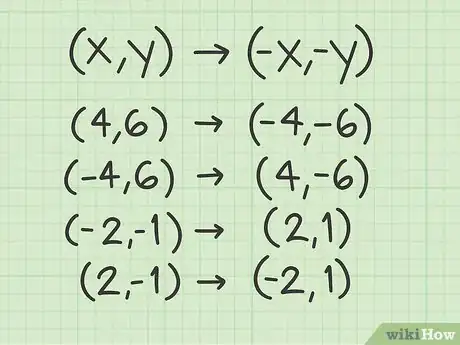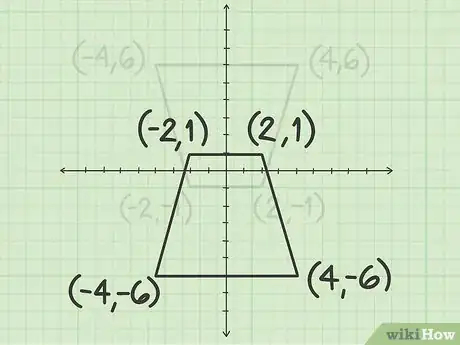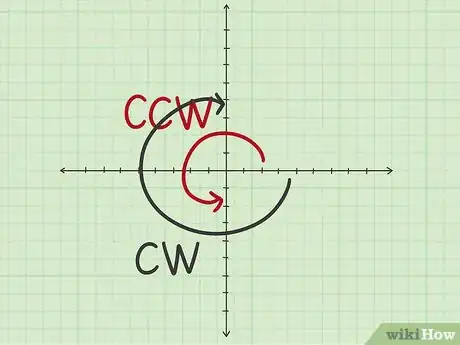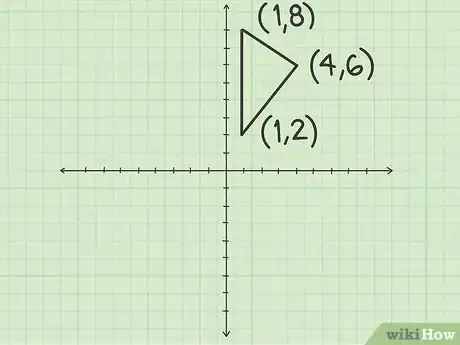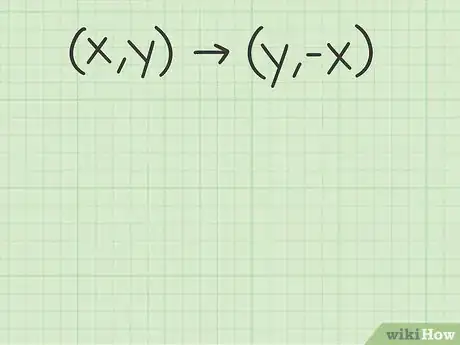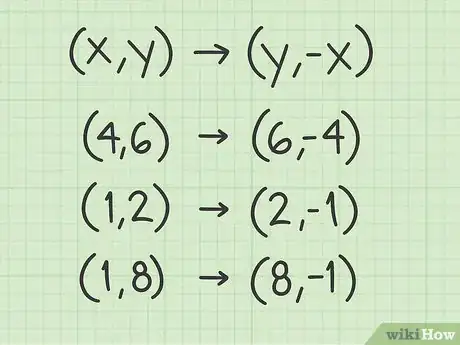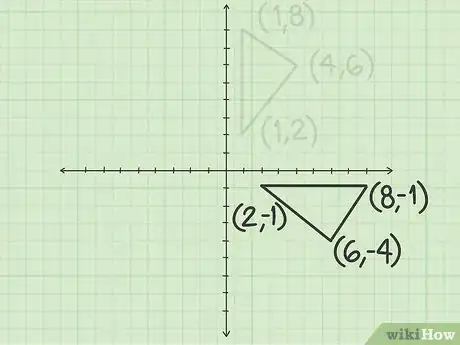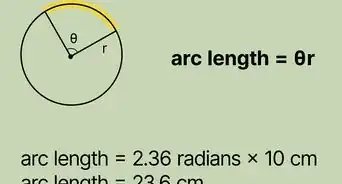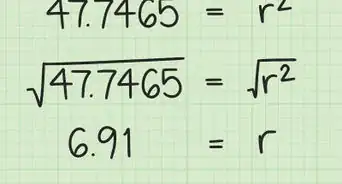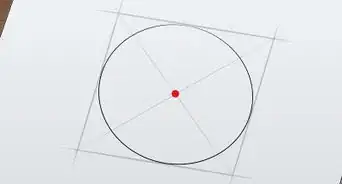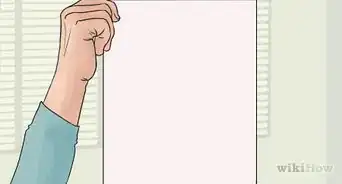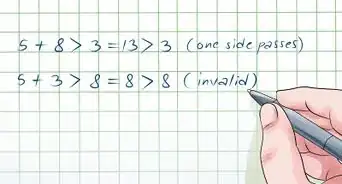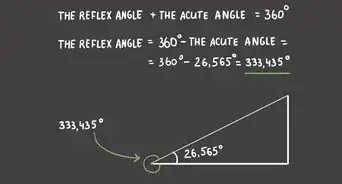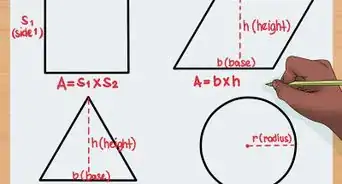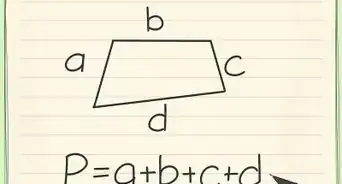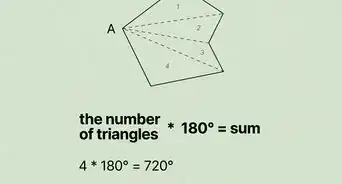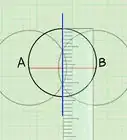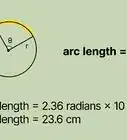This article was co-authored by wikiHow Staff. Our trained team of editors and researchers validate articles for accuracy and comprehensiveness. wikiHow's Content Management Team carefully monitors the work from our editorial staff to ensure that each article is backed by trusted research and meets our high quality standards.
There are 8 references cited in this article, which can be found at the bottom of the page.
wikiHow marks an article as reader-approved once it receives enough positive feedback. In this case, several readers have written to tell us that this article was helpful to them, earning it our reader-approved status.
This article has been viewed 151,482 times.
Learn more...
A rotation is a type of geometrical transformation in which the vertices of a shape are rotated at a certain angle around a fixed point (called the center of rotation).[1] In simpler terms, imagine gluing a triangle to the second hand of a clock that is spinning backwards. Usually, you will be asked to rotate a shape around the origin, which is the point (0, 0) on a coordinate plane. You can rotate shapes 90, 180, or 270 degrees around the origin using three basic formulas.
Steps
Rotating a Shape 90 Degrees About the Origin
-
1Note the corresponding clockwise and counterclockwise rotations. Rotating a shape 90 degrees is the same as rotating it 270 degrees clockwise.[2] The convention is that when rotating shapes on a coordinate plane, they rotate counterclockwise, or towards the left.[3] You should assume this, unless it is noted in the problem that you need to rotate clockwise.
- For example, if the problem states, “Rotate the shape 90 degrees around the origin,” you can assume you are rotating the shape counterclockwise.
- You would complete this problem the same way you complete a problem that asks “Rotate the shape 270 degrees clockwise around the origin.”
- You might also see, “Rotate this shape -270 degrees around the origin.”
- For example, if the problem states, “Rotate the shape 90 degrees around the origin,” you can assume you are rotating the shape counterclockwise.
-
2Find the coordinates of the original vertices. If these aren’t already provided, determine the coordinates using the graph. Remember that coordinates of points are shown using the formula, where equals the point on the horizontal, or x-axis, and equals the point on the vertical, or y-axis.[4]
- For example, you might have a triangle with points (4, 6), (1, 2), and (1, 8).
Advertisement -
3
-
4Plug the coordinates into the formula. Make sure that you keep your x and y-coordinates straight. In this formula, you take the negative of the y value, and then switch the order of the coordinates.[7]
- For example, the points (4, 6), (1, 2), and (1, 8) become (-6, 4), (-2, 1), and (-8, 1).
-
5Draw the new shape. Plot the new vertex points on the plane. Connect your points using a straightedge. The resulting shape shows the original shape rotated 90 degrees around the origin.[8]
Rotating a Shape 180 Degrees About the Origin
-
1Identify the corresponding clockwise and counterclockwise rotations. Since a full rotation has 360 degrees, rotating a shape 180 degrees clockwise is the same as rotating 180 counterclockwise.
- If the problem states, “Rotate the shape 180 degrees around the origin,” you can assume you are rotating the shape counterclockwise.
- You would complete this problem the same way you complete a problem that asks “Rotate the shape 180 degrees clockwise around the origin.”
- You might also see, “Rotate this shape -180 degrees around the origin.”
- If the problem states, “Rotate the shape 180 degrees around the origin,” you can assume you are rotating the shape counterclockwise.
-
2Write down the coordinates of the original shape’s vertices. These will likely be given. If not, you should be able to deduce them from looking at the coordinate graph. Remember to note the coordinates of each vertex’s point using the (x, y) convention.
- For example, you might have a rhombus with points (4, 6), (-4, 6), (-2, -1), and (2, -1).
-
3
-
4Plug the coordinates into the formula. Take care to plug the correct coordinate into the correct position of the new ordered pair. In this formula, you keep the x and y values in the same position, but you take the negative value of each coordinate.
- For example, the points (4, 6), (-4, 6), (-2, -1), and (2, -1) become (-4, -6), (4, -6), (2, 1), and (-2, 1).
-
5Draw the new shape. Plot the new vertex points on the plane. Connect your points using a straightedge. The resulting shape shows the original shape rotated 180 degrees around the origin.[11]
Rotating a Shape 270 Degrees About the Origin
-
1Note the corresponding clockwise and counterclockwise rotations. Rotating a shape 270 degrees is the same as rotating it 90 degrees clockwise. Conventionally, shapes are rotated counterclockwise on a coordinate plane.[12] You should assume this, unless it is noted in the problem that you need to rotate clockwise.
- For example, if the problem states, “Rotate the shape 270 degrees around the origin,” you can assume you are rotating the shape counterclockwise.
- You would complete this problem the same way you complete a problem that asks “Rotate the shape 90 degrees clockwise around the origin.”
- You might also see, “Rotate this shape -90 degrees around the origin.”
- For example, if the problem states, “Rotate the shape 270 degrees around the origin,” you can assume you are rotating the shape counterclockwise.
-
2Find the coordinates of the original vertices. This information should be provided, or you should be able to easily find the coordinates by looking at the coordinate plane.
- For example, you might have a triangle with points (4, 6), (1, 2), and (1, 8).
-
3
-
4Plug the coordinates into the formula. Make sure you plug the correct x and y values into the new coordinate pair. In this formula, the x and y values are reversed, and you take the negative value of the x coordinate.[15]
- For example, the points (4, 6), (1, 2), and (1, 8) become (6, -4), (2, -1), and (8, -1).
-
5Draw the new shape. Draw the new points on the plane. Use a straightedge to connect them. The resulting shape shows the original shape rotated 270 degrees around the origin.[16]
Community Q&A
-
QuestionHow would I rotate a quadrilateral about a point?
 NitakuarCommunity AnswerIf the point is the origin, then simply apply above the transformation for each of the vertices. If it is some other point, then shift the coordinate axes parallel to the original so it becomes the origin and, after rotation, revert back to the original coordinates.
NitakuarCommunity AnswerIf the point is the origin, then simply apply above the transformation for each of the vertices. If it is some other point, then shift the coordinate axes parallel to the original so it becomes the origin and, after rotation, revert back to the original coordinates. -
QuestionWhat does "around the origin" mean? Does it mean around point (0,0)?
 Community AnswerThe origin is around (0,0), the center of the diagram.
Community AnswerThe origin is around (0,0), the center of the diagram. -
QuestionWhat if the number is negative?
 DonaganTop AnswererIf we assume a positive rotation is counterclockwise (anti-clockwise), a negative rotation would be clockwise (to the right at the top).
DonaganTop AnswererIf we assume a positive rotation is counterclockwise (anti-clockwise), a negative rotation would be clockwise (to the right at the top).
References
- ↑ http://www.varsitytutors.com/hotmath/hotmath_help/topics/rotations
- ↑ http://www.virtualnerd.com/pre-algebra/geometry/transformations-symmetry/rotating-figures/rotate-270-degrees-about-origin
- ↑ https://www.khanacademy.org/math/geometry/hs-geo-transformations/hs-geo-rotations/v/points-after-rotation
- ↑ https://www.khanacademy.org/math/geometry/hs-geo-transformations/hs-geo-rotations/a/rotating-shapes
- ↑ https://mathbitsnotebook.com/Algebra1/FunctionGraphs/FNGTransformationRotation.html
- ↑ http://www.virtualnerd.com/pre-algebra/geometry/transformations-symmetry/rotating-figures/rotate-270-degrees-about-origin
- ↑ https://www.khanacademy.org/math/geometry/hs-geo-transformations/hs-geo-rotations/a/rotating-shapes
- ↑ https://www.khanacademy.org/math/geometry/hs-geo-transformations/hs-geo-rotations/a/rotating-shapes
- ↑ https://mathbitsnotebook.com/Algebra1/FunctionGraphs/FNGTransformationRotation.html
- ↑ http://www.virtualnerd.com/pre-algebra/geometry/transformations-symmetry/rotating-figures/rotate-180-degrees-about-origin
- ↑ https://www.math-only-math.com/180-degree-rotation.html
- ↑ https://www.khanacademy.org/math/geometry/hs-geo-transformations/hs-geo-rotations/v/points-after-rotation
- ↑ https://mathbitsnotebook.com/Algebra1/FunctionGraphs/FNGTransformationRotation.html
- ↑ https://virtualnerd.com/pre-algebra/geometry/transformations-symmetry/rotating-figures/rotate-270-degrees-about-origin
- ↑ https://virtualnerd.com/pre-algebra/geometry/transformations-symmetry/rotating-figures/rotate-270-degrees-about-origin
- ↑ https://virtualnerd.com/pre-algebra/geometry/transformations-symmetry/rotating-figures/rotate-270-degrees-about-origin
About This Article
To rotate a shape 90 degrees around the point of origin, turn the x and y coordinates into -y and +x coordinates. For example, a triangle with the coordinates 1,2, 4,2, and 4,4 would become -2,1, -2,4, and -4,4. If you want to rotate a shape 180 degrees around the point of origin, turn the x and y coordinates into -y and -x coordinates. So, if a line has the coordinates 2,4 and 4,5, it would rotate to -4,-2 and -5,-4. Read more to learn how to rotate a shape 270 degrees!
